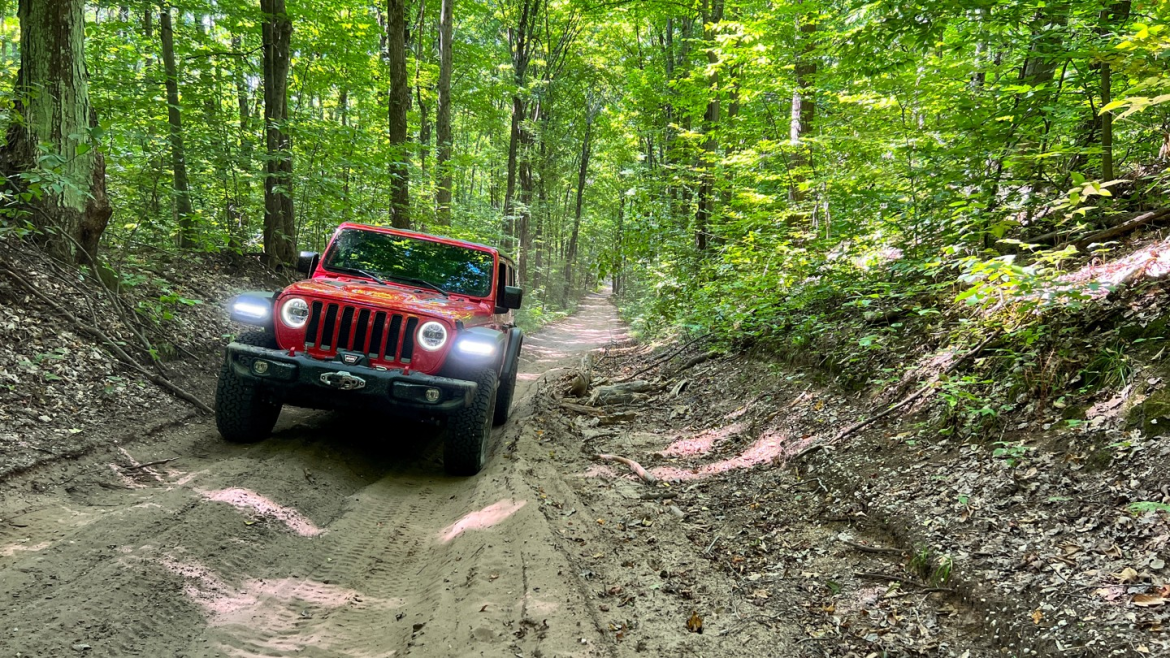By Boondocking Magazine Staff
October 2025
Michigan’s sprawling forests and sandy trails have long been a paradise for off-road enthusiasts — from dirt bikers and side-by-side riders to campers using forest roads for remote access. But according to state officials and conservation groups, a growing number of riders are straying from designated trails, causing damage that’s becoming increasingly hard to manage.
🌲 A Growing Problem Off the Trail
The Michigan Department of Natural Resources (DNR) estimates that over 300,000 off-road vehicle uses occur each year across public lands — an impressive sign of outdoor enthusiasm, but also a growing challenge for forest managers.
“Off-trail riding is one of the biggest issues we’re dealing with,” said a DNR forest technician based in Grayling. “When vehicles cut through wetlands or create new tracks through ferns and saplings, it can take decades for those ecosystems to recover.”
Recent aerial surveys and ranger reports show increased rutting, erosion, and the spread of invasive plants in northern Michigan forests — particularly in Ogemaw, Oscoda, and Otsego Counties, where riders sometimes create new “ghost trails” that later attract more traffic.
⚖️ Balancing Access with Preservation
Michigan’s ORV system is one of the largest in the Midwest, offering over 4,000 miles of designated trails and routes, many of which are open year-round. The state’s “open unless posted closed” rule allows riding on many forest roads unless explicitly restricted — a policy praised for its flexibility, but one that also creates enforcement challenges.
The DNR currently manages the ORV program through licensing and trail permits, with funds supporting maintenance, signage, and law enforcement patrols. Yet as usage surges, many say funding and staff haven’t kept pace.
“Responsible riders make up the majority,” said a representative from the Michigan Off-Road Vehicle Association (MORVA). “But it only takes a few bad apples to give everyone a black eye — and to risk new restrictions that hurt access for all.”
🧭 Federal Policy Shifts on the Horizon
The conversation isn’t limited to Michigan. Nationally, forest management policy is being reexamined following talk of repealing the federal Roadless Rule, a 2001 measure that restricts road construction and logging in undeveloped national forest areas.
If reversed, roughly 16,000 acres of Michigan’s federally managed forest — primarily in the Upper Peninsula’s Ottawa and Hiawatha National Forests — could be opened to new roads, development, or resource extraction.
Environmental groups warn that such changes could accelerate fragmentation and reduce opportunities for true backcountry experiences. Others, including local logging interests and rural economic boards, argue that selective development could create jobs and improve access.
🔥 DNR Eyes Prescribed Burns and Restoration Work
To counter decades of dense undergrowth and storm debris, the DNR and U.S. Forest Service have also ramped up prescribed burns across northern forests — a measure designed to reduce wildfire risk and maintain forest health.
Prescribed burns are already planned for 2025 and 2026 in Alcona, Marquette, and Schoolcraft Counties, focusing on oak-pine ecosystems that depend on periodic fire to regenerate.
“We’re trying to restore natural balance while protecting public safety,” said a Forest Service ecologist. “It’s about managing the land proactively — not reactively.”
🪵 Legislation to Create New Forest Authority
In Lansing, a pair of bipartisan bills — House Bills 4694 and 4695 — would establish a local forest management authority, allowing regions like Keweenaw County to oversee conservation, recreation, and sustainable forestry on tens of thousands of acres of public land.
If passed, the move could empower local governments to take more control over how forest lands are maintained — from logging permits to trail access planning — giving communities a greater say in balancing recreation with resource management.
🏞️ The Road Ahead
Michigan’s forests are both playground and livelihood — a shared resource spanning millions of acres. But as off-road recreation continues to grow, the state faces a critical question: how to keep its backcountry wild while still letting people enjoy it.
For boondockers, campers, and ORV users alike, the message is clear: stay on designated routes, pack out what you bring in, and respect the land that makes this lifestyle possible.
Editor’s Note
Boondocking Magazine encourages readers to share photos and stories from their favorite Michigan forest roads and ORV trails — especially examples of responsible use, restoration projects, and cooperative trail stewardship. Send your stories to [email protected] for possible inclusion in an upcoming feature.



